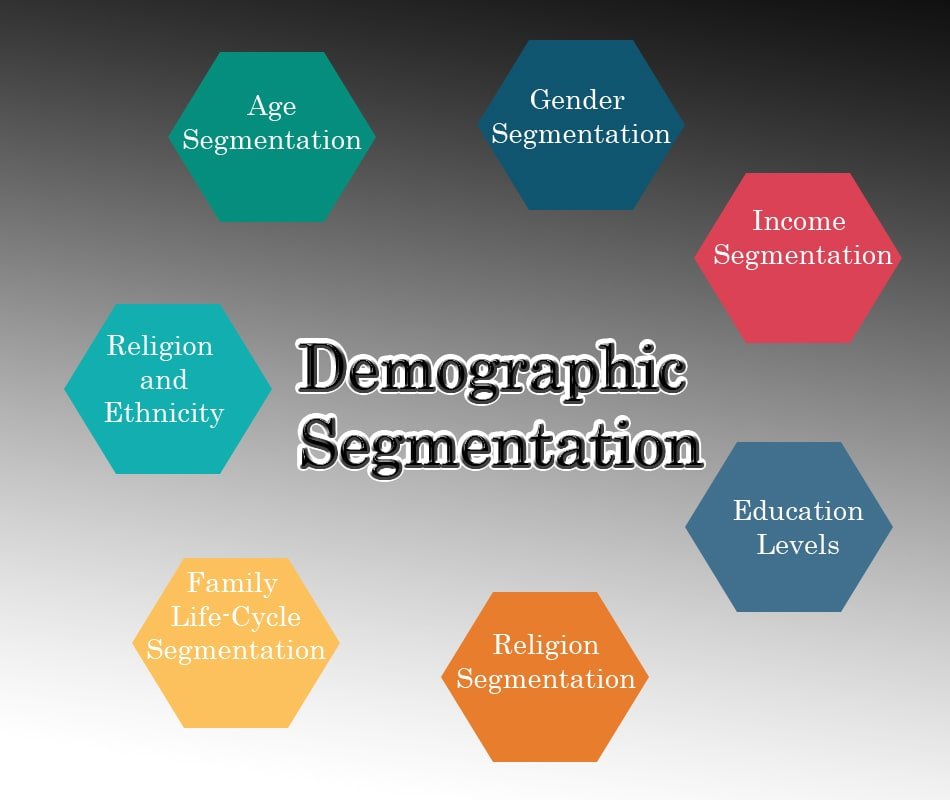Demographic Segmentation

Understanding your audience is key to success. Demographic segmentation can be your roadmap.
Demographic segmentation is the secret sauce that can transform your marketing from bland to brilliant. By understanding the age, gender, income, education, and family status of your target audience, you can design messages that speak directly to their unique needs and desires. Imagine a world where your ads feel like a personalized invitation rather than an annoying interruption. That’s the power of demographic segmentation.
Forget one-size-fits-all marketing. In today’s competitive landscape, you need to be a marketing ninja, slicing through the noise to reach your ideal customers. Demographic segmentation is your sharpest tool. By dividing your audience into manageable groups based on shared characteristics, you can create tailored content that resonates on a deeper level. Whether you’re selling luxury watches or organic baby food, demographic segmentation is the key to unlocking your brand’s full potential. Get ready to watch your engagement soar and your sales skyrocket!
Age Segmentation
Marketers use various terms to describe different age groups, such as infants, children, tweens, and seniors. Traditionally, companies have targeted parents of young children with products like diapers, baby foods, and toys. Now, some companies are developing products and services aimed directly at young children. For example, Amazon Prime Book Box delivers books monthly to nurture young readers.
Gender Segmentation
Historically, women have bought more groceries, personal care items, and cosmetics than men. However, many companies now target male customers with these traditionally feminine products. Conversely, companies that targeted men, like ESPN, are now reaching out to female audiences.
Income Segmentation
Income greatly influences consumers’ buying decisions and desires. Companies often tailor their strategies to different income segments. For instance, Clorox sells smaller, affordable product sizes for lower-income customers. Meanwhile, luxury brands cater to higher-income segments, offering premium products like high-end technology, clothing, and cars.
Education Levels
The education level of your customers influences your marketing strategy and product features. It affects how you communicate your message and the complexity of the products you offer. Highly educated audiences might prefer more complex features, while simpler products might appeal to those with lower education levels.
Religion
Religion can be a sensitive but powerful demographic factor. Different religions have unique values that influence purchasing behavior. Understanding these values helps businesses tailor their products and marketing messages to specific religious groups.
Family Life-Cycle Segmentation
Factors like age, income, and gender alone cannot predict consumer behavior. People of similar age and gender often have different consumption patterns based on their family life cycle stage. Family makeup influences needs and wants, affecting buying habits and priorities.
Religion and Ethnicity
Global advertising has increased the importance of segments based on race, religion, ethnicity, and nationality. Different cultures have varied interests, preferences, and beliefs that impact marketing responses and purchasing habits. Companies like Coca-Cola and Pepsi localize their campaigns to align with local customs and religions.
Benefits of Demographic Segmentation
Easy Access to Data: Collecting demographic data is straightforward with tools like online surveys and social media platforms.
Improved Personalization: Tailor your messages to different segments, making your marketing more memorable and effective.
Target More Effectively: Better understand your audience to improve existing products or create new ones, saving time and resources.
Optimal Use of Resources: Focus resources on key customer segments to increase engagement, loyalty, and ROI.
Business Planning: Use demographic insights as the foundation of your business plan to ensure potential customers are aware of your products and services.
Conclusion
Demographic segmentation is a powerful tool that transforms your marketing strategy, enabling you to design personalized messages for distinct audience segments. By understanding and targeting age, gender, income, education, and family status, you can create deeply resonant content. This approach not only enhances engagement but also drives sales and optimizes resource use, ensuring your marketing efforts are both efficient and effective.